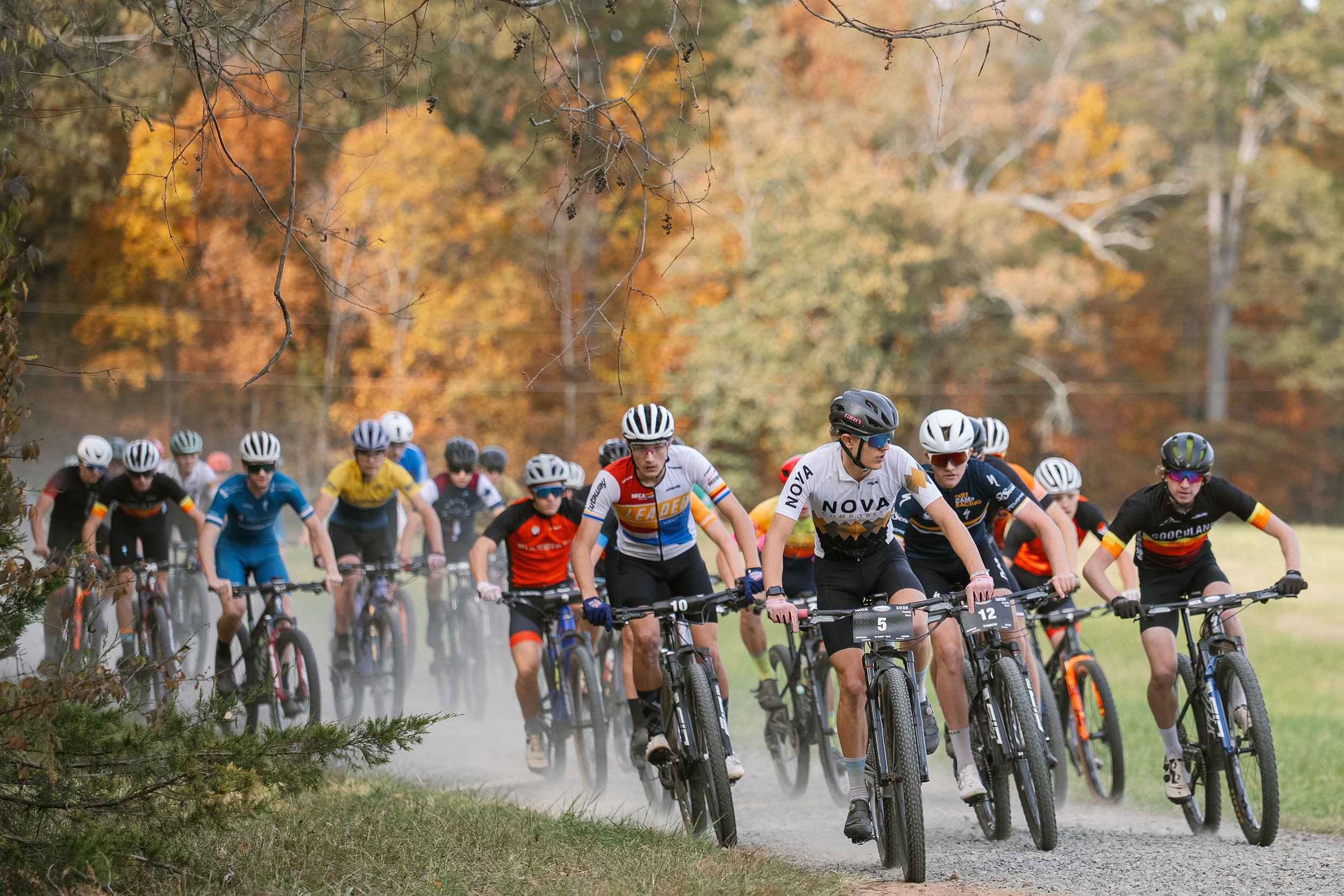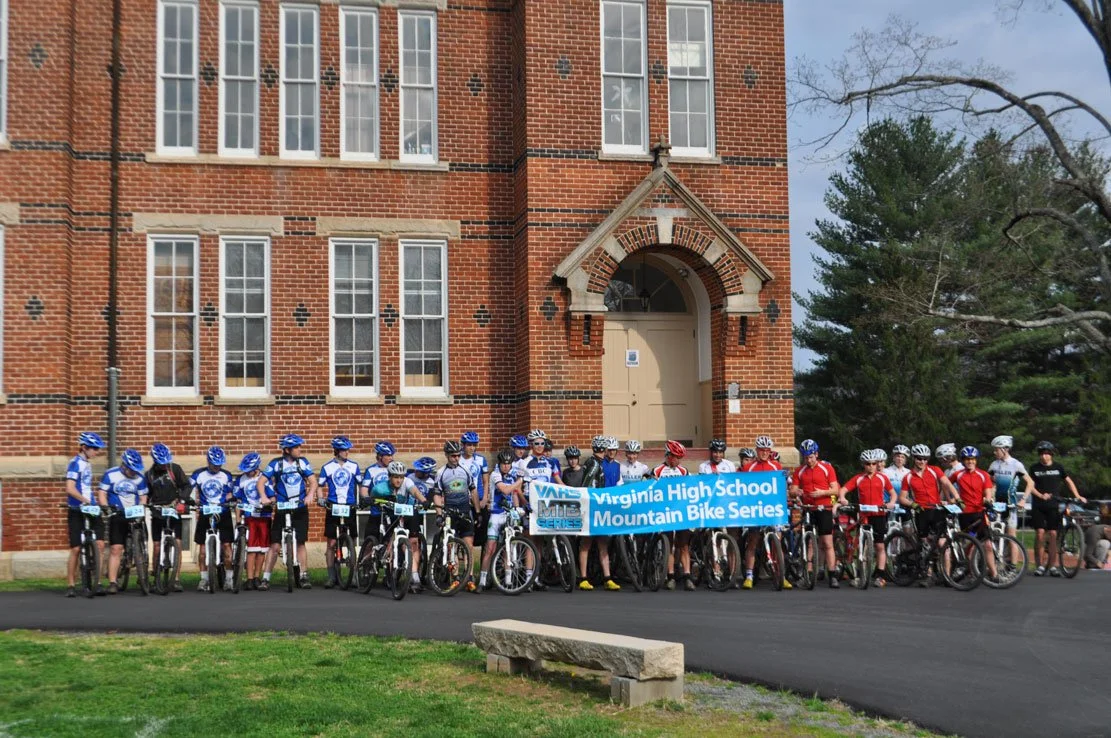A League of Their Own
Liam taking victory in the Leader’s Jersey at the final race of the season.
This fall, Miller School won its tenth straight National Interscholastic Cycling Association Virginia League Championship, though by the thinnest of margins. There were races in which no Miller School rider reached the varsity boys’ podium—even though this year's roster may be the strongest in the program’s history. In a surprising way, almost losing may be the most important win the team has had. To understand why requires stepping back.
Jack. powering to victory in the final Varsity Boys race of the season.
The 2025 NICA Virginia season marked fifteen years of organized mountain bike racing for middle and high school students in the Commonwealth. What began in 2011 with twenty-eight riders and a few scattered teams has become a statewide league with more than one thousand student-athletes, five hundred competitive racers, three hundred licensed coaches, and thirty-eight teams. The numbers remain modest compared to traditional school sports, but the growth is extraordinary when measured against what junior cycling looked like just fifteen years ago.
To attend a race now is to feel that change. Crowds line singletrack cut through pines and meadow. Cowbells carry through the woods. Race categories send off sixty to ninety riders at a time. National-level juniors race for seconds on tight, flowing courses. There are sprints, crashes, and the charged atmosphere of Friday Night Lights—without the stadium.
Lucia focused in the Leader’s jersey at race 3 at Woodberry Forest School.
Miller School’s cycling program began before any of this infrastructure was here. In 2010, the school launched a small mountain bike team using borrowed bikes and cross-country runners willing to try something new. There were no interscholastic races in Virginia then—no blueprint, no league, no campus trails, no certainty that other schools would join. The idea was simply that cycling belonged in the life of the school: outdoors, demanding, freeing, requiring patience and discipline.
Varsity Boys race flying onto course.
This willingness to begin without a map echoes Samuel Miller’s own story. Raised in a one-room, dirt-floor cabin in Batesville and educated by his mother, he built a life that no one could have predicted. His success grew from seeing possibility where others saw limitation, and trusting an idea before it was widely shared. That sensibility remains part of the Hill’s character.
At the same time Miller School was beginning its cycling program, in northern California, teacher and coach Matt Fritzinger was developing a model for school-based mountain biking. His work eventually became the National Interscholastic Cycling Association (NICA), founded in 2009 to support states in building their own leagues.
Elementary and Middle School leaders in 2025 during VAHS season.
With no league yet available in Virginia, Miller School and a small network of riders, coaches, and cycling advocates created the VAHS MTB Series. The first season included only twenty-eight riders—from Miller School, Blue Ridge School, and nearby youth programs—but it sparked momentum. Virginia became the first state on the East Coast to host organized interscholastic mountain bike racing.
Just before the start of first race in 2011.
The first interscholastic mountain bike race in 2011 at Miller School.
Across the region, coaches and community leaders built the landscape that would allow the sport to take root: Tony Brown at Blue Ridge School helped establish one of the earliest school-based teams; Nolan LaVoie at Woodberry Forest brought coaching continuity and long-term vision; Jen and Stefan Raab established a team in Northern Virginia; Jason Hopkins expanded youth access in Richmond; Ken Bell helped cultivate a strong riding community in Harrisonburg; and in Charlottesville, Shawn Tevendale and Ruth Stornetta nurtured trails, riding culture, and development programs that supported young racers across central Virginia.
Evan P. fighting for position in the JV race.
Additionally, Andy Guptill led the design and build of sixteen miles of purpose-built mountain bike trails on campus. Students had a hand in shaping and constructing every inch of the trails they train and race on. Furthermore, Miller School opened its trails to the wider community, allowing other teams to use the trails for practices and weekend rides. On any given day, there can be over 100 youth mountain bikers enjoying Miller School’s campus trails.
As the sport grew, so did Miller School’s program. Riders from across the United States, Canada, and Europe began to seek out MSA as a place where competitive cycling could be pursued seriously. The team expanded from seven novices to more than fifty elite-level riders training together each day. During this period, Miller School frequently swept podiums and won races by significant margins.
Evan P-W on her way to second overall in the girls varsity category.
But the long-term goal was not only dominance—it was also sustainability, community, and trail access. When Virginia formally partnered with NICA in 2014, the league gained coaching development systems, risk-management structures, and organizational support that allowed teams to form statewide.
In 2018, Monticello High School became the first public school in Virginia to recognize mountain biking as a varsity sport. That milestone was guided by Athletic Director Matt Pearman, who saw that mountain biking allowed students of varied backgrounds and abilities to compete, ride, and belong in the school’s athletic department. Monticello built trails on campus and awarded varsity letters—signaling that this sport had a place in public schools too. Soon after, every public high school in Albemarle County followed, making it one of the first districts in the nation where every student could join a mountain bike team.
MSA on the top step of the team podium at race 2 at Monticello HS.
Today, the Virginia NICA League rests on foundations built over many years: hand-cut trails, high quality races, and a belief that young people benefit from time outdoors.
In that context, Miller School nearly losing the championship this season is not a sign of decline—it is evidence of success. The competition has risen. The sport is healthy. The vision worked.
Campus turned into race venue.











